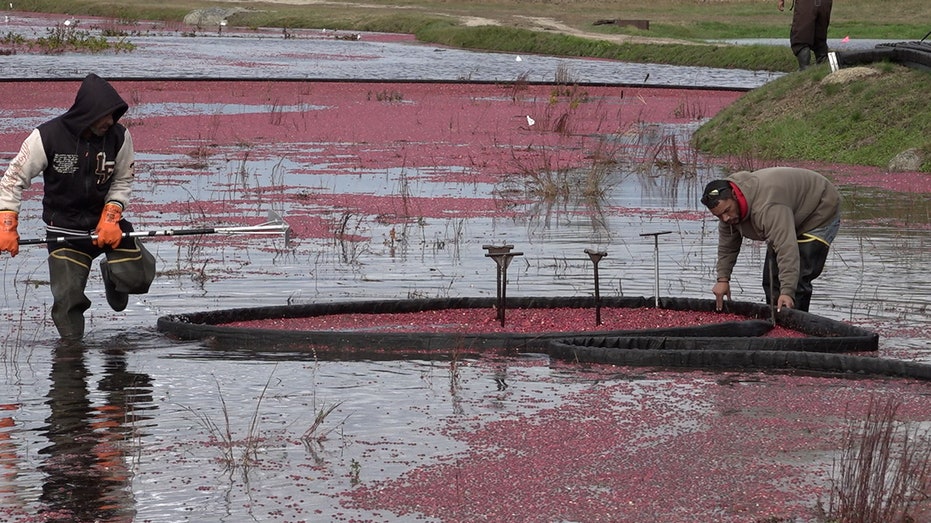
UPDATE: Cranberry farmers in Massachusetts are facing a critical turning point as rising production costs force them to retire their bogs. With the Bay State ranking second in cranberry production nationally, this development signals significant shifts in the agricultural landscape.
Located in Carver, Massachusetts, fourth-generation farmer Jarrod Rhodes reveals that increased expenses and changing weather patterns are making it increasingly difficult to sustain operations. Rhodes, who produces 50,000 barrels (approximately 5 million pounds) of cranberries annually, states, “It kind of all adds up, and it becomes a lot more expensive to grow here versus Wisconsin or Canada.”
The Cape Cod Cranberry Growers’ Association highlights the economic impact of the cranberry industry, contributing $1.7 billion to the state and supporting nearly 6,400 jobs. However, as operational costs continue to climb, many farmers like Rhodes are considering their futures.
Massachusetts is grappling with high expenses related to labor, utilities, and real estate. “Massachusetts is an expensive place to do business in general,” explains Karen Cahill, deputy executive director of the Association. The state’s smaller scale compared to Wisconsin, which boasts over double the cranberry acreage, further exacerbates the financial strain on local farmers.
In response to these pressures, Rhodes has opted to participate in a state program aimed at retiring and restoring over 30 acres of older bogs. “The property was in distress and it needed to be rebuilt,” he says. The Massachusetts Division of Ecological Restoration (DER) manages this initiative, converting retired bogs back to native wetlands, which has seen successful projects like the Eel River Headwaters Restoration.
Rhodes applied for this program, funded by state and federal grants, deciding to invest in more productive properties instead of rebuilding the unprofitable bogs. “We decided to not rebuild this but take the money and buy a better property,” he stated. This strategic move allows the Rhodes family to focus on higher-yielding fields while ensuring that the retired bogs are permanently protected as wetlands.
The DER describes this approach as a “green exit strategy,” compensating families like the Rhodes for converting their bogs to wetlands. This strategy not only preserves the land but also fosters ecological restoration. “Land must be legally protected before construction begins,” explains Krista Haas of DER, emphasizing the importance of conservation easements.
As the restoration of Rhodes’ bog is scheduled for completion in Spring 2026, many local farmers are contemplating similar paths. With an aging farmer demographic and younger generations less interested in continuing the tradition, the cranberry industry in Massachusetts is at a crossroads.
The DER aims to restore 1,000 acres over the next 10 to 15 years, a goal that reflects a broader trend in agricultural sustainability. “This is the first restoration project at Eel River Headwaters near Plymouth,” said Beth Lambert, executive director of DER.
As more farmers face these challenges, the urgency to adapt and explore sustainable practices grows. The implications of this shift extend beyond economics, touching upon environmental conservation and the future of farming in Massachusetts.
Stay tuned for further updates as this situation develops, highlighting the ongoing transformation within the cranberry industry.





